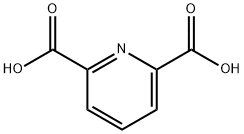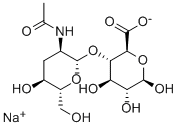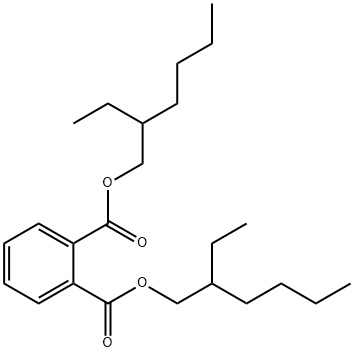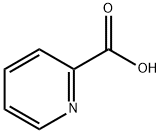Pyridine-2,6-dicarboxylic acid
Synonym(s):DPA;Dipicolinic acid;Pyridine-2,6-dicarboxylic acid;DPAc;Dipicolinic acid solution
- CAS NO.:499-83-2
- Empirical Formula: C7H5NO4
- Molecular Weight: 167.12
- MDL number: MFCD00006299
- EINECS: 207-894-3
- SAFETY DATA SHEET (SDS)
- Update Date: 2025-12-17 09:49:24

What is Pyridine-2,6-dicarboxylic acid?
Description
2,6-Pyridinedicarboxylic acid (PDCA) contains two carboxylic groups on each side of the pyridine ring. Both groups form rigid 120° angles with the pyridine. Carboxylic functionality could be complex and bind with metals under certain conditions. Numerous metal?organic frameworks, metal complexes, drugs, and CPs based on PDCA were developed for applications related to gas storage, separation, catalysis, magnetism, and sensing[1]. Shao et al. researched the solubility of PDCA in methanol, ethanol, n-propanol, isopropanol, THF, 1,4-dioxane, acetic acid, formic acid, acetonitrile, ethyl acetate, and toluene. They found that PDCA solubility was the highest in methanol but the lowest in acetonitrile.
Chemical properties
White crystalline powder. Insoluble in ethanol.
Physical properties
Pyridine-2,6-dicarboxylic acid is a solid, soluble in Water: 1%.
The Uses of Pyridine-2,6-dicarboxylic acid
Pyridine-2,6-dicarboxylic acid is used in the preparation of dipicolinato ligated lanthanide and transition metal complexes. It acts as a chelating agent for chromium, zinc, manganese, copper, iron and molybdenum. Its calcium-dipcolinic acid complex is used to protect deoxyribonucleic acid (DNA) from heat denaturation which enhances the DNA stability. It plays an important role as a marker for the effectiveness of sterilization.
Definition
ChEBI: Pyridine-2,6-dicarboxylic acid is a pyridinedicarboxylic acid carrying two carboxy groups at positions 2 and 6. It has a role as a bacterial metabolite. It is a conjugate acid of a dipicolinate(1-).
What are the applications of Application
2,6-Pyridinedicarboxylic acid is an amphoteric polar metabolite produced by many bacterial and fungal species. Prior to its discovery as a microbial metabolite, dipicolinic acid had long been recognised as a chelating agent for many metal ions. Wide distribution of dipicolinic acid among microbes makes it an important dereplication standard in discovery. Dipicolinic acid reaches high concentrations (~10% w/w) in Bacillus endospores aiding heat resistance and is used in laboratories as a marker for the effectiveness of sterilisation.
Preparation
pyridine-2,6-dicarboxylic acid was synthesized by hydrolyzing of ester prepared by coupling of diethyl 4-hydroxypyridine-2,6-dicarboxylate to bis-halohydrocarbon or bis-halide.
Synthesis of Novel Derivatives of Pyridine‐2,6‐dicarboxylic Acid
Synthesis
50 g of acetonitrile, 16.0 g (0.1 mol) of 1, 7-pimelic acid and 0.5 g of aluminum trichloride are added into a 500 ml four-neck flask which is connected with a stirring thermometer and a reflux condenser, chlorine gas is introduced, 30 g of chlorine gas is introduced altogether, the mixture is stirred and reacted for 8 hours at the temperature of 50-55 ℃, the mixture is cooled to 20-25 ℃, the nitrogen gas is blown away for 2 hours, 65 g of 17 wt% ammonia water is added, the mixture is stirred and reacted for 5 hours at the temperature of 70-75 ℃, then the mixture is cooled to 20-25 ℃, 30 g of 30 wt% nitric acid is added, the mixture is stirred and reacted for 4 hours at the temperature of 40-45 ℃, the reaction liquid is added into 200 g of water, the pH value of a hydrochloric acid adjusting system is 2.5-2.0, the filtration and the drying are carried out, 15.0 g of white solid 2, 6-pyridinedicarboxylic acid with.
Synthesis Reference(s)
Synthetic Communications, 22, p. 2691, 1992 DOI: 10.1080/00397919208021669
General Description
This certified eluent concentrate for ion chromatography is traceable by potentiometric titration to NIST Standard Reference Material. It is certified in accordance with ISO Guide 31. All details about exact content, uncertainty, traceability and expiry date are described in the certificate.
References
[1] Xianzhao Shao. Solubility Thermodynamic Modeling and Solubility Parameter of 2,6- Pyridinedicarboxylic Acid in Selected Solvents at Different Temperatures[J]. J. Chem. Eng. Data, 2021. DOI:org/10.1021/acs.jced.1c00200.
Properties of Pyridine-2,6-dicarboxylic acid
| Melting point: | 248-250 °C (dec.)(lit.) |
| Boiling point: | 295.67°C (rough estimate) |
| Density | 1.5216 (rough estimate) |
| vapor pressure | <0.01 hPa (20 °C) |
| refractive index | 1.6280 (estimate) |
| Flash point: | 188 °C |
| storage temp. | Store below +30°C. |
| solubility | H2O: 1%, clear |
| form | Crystalline Powder |
| pka | 2.16(at 25℃) |
| color | White |
| PH | 2.0 (5g/l, H2O, 20℃) |
| Water Solubility | 5 g/L (20 ºC) |
| BRN | 131629 |
| CAS DataBase Reference | 499-83-2(CAS DataBase Reference) |
| NIST Chemistry Reference | 2,6-Pyridinedicarboxylic acid(499-83-2) |
| EPA Substance Registry System | 2,6-Pyridinedicarboxylic acid (499-83-2) |
Safety information for Pyridine-2,6-dicarboxylic acid
| Signal word | Warning |
| Pictogram(s) |
 Exclamation Mark Irritant GHS07 |
| GHS Hazard Statements |
H315:Skin corrosion/irritation H319:Serious eye damage/eye irritation H335:Specific target organ toxicity, single exposure;Respiratory tract irritation |
| Precautionary Statement Codes |
P302+P352:IF ON SKIN: wash with plenty of soap and water. P305+P351+P338:IF IN EYES: Rinse cautiously with water for several minutes. Remove contact lenses, if present and easy to do. Continuerinsing. |
Computed Descriptors for Pyridine-2,6-dicarboxylic acid
| InChIKey | WJJMNDUMQPNECX-UHFFFAOYSA-N |
Pyridine-2,6-dicarboxylic acid manufacturer
JSK Chemicals
SAKEM LLP
Kavya Pharma
ASM Organics
New Products
4,4-Difluoropiperidine hydrochloride tert-butyl 9-methoxy-3-azaspiro[5.5]undecane-3-carboxylate Indole Methyl Resin N-Isopropylurea N,N-Dicyclohexylcarbodiimide(DCC) MELDRUMS ACID 5-METHYLISOXAZOLE-4-CARBOXYLIC ACID Magnessium Bis glycinate Zinc ascorbate 1-bromo-2-butyne 2-acetamidophenol 9(10H)-anthracenone Erythrosin B, 4-Piperidinopiperidine 2-((4-morpholinophenylamino) (methylthio) methylene) malononitrile 2,4-dihydroxybenzaldehyde 3-(4-morpholinophenylamino)-5-amino-1H-pyrazole-4-carbonitrile Methyl 2-methylquinoline-6-carboxylate 2,6-dichloro-4-nitropyridine 4-Bromo-2-chlorobenzonitrile 2-(benzylamino)acetic acid hydrochloride 4-(tert-Butoxycarbonylamino)but- 2-ynoic acid 3,4-dihydro-2H-benzo[b][1,4]dioxepine 1-Phenyl-1-cycloprppanecarboxylicacidRelated products of tetrahydrofuran








You may like
-
 Dipicolinic Acid 99%View Details
Dipicolinic Acid 99%View Details -
 Pyridine-2,6-dicarboxylic acid CAS 499-83-2View Details
Pyridine-2,6-dicarboxylic acid CAS 499-83-2View Details
499-83-2 -
 2,6-Pyridinedicarboxylic Acid CAS 499-83-2View Details
2,6-Pyridinedicarboxylic Acid CAS 499-83-2View Details
499-83-2 -
 2,6-Dipicolinic acid, 99% CAS 499-83-2View Details
2,6-Dipicolinic acid, 99% CAS 499-83-2View Details
499-83-2 -
 2 6 Dipicolinic AcidView Details
2 6 Dipicolinic AcidView Details
499-83-2 -
 Pyridine-2, 6-Dicarboxylic Acid, 25 kg Bag, Grade: PharmaView Details
Pyridine-2, 6-Dicarboxylic Acid, 25 kg Bag, Grade: PharmaView Details
499-83-2 -
 2,6- Pyridinedicarboxylic Acid ( 1KG, 5kg Ready Stock)View Details
2,6- Pyridinedicarboxylic Acid ( 1KG, 5kg Ready Stock)View Details
499-83-2 -
 2, 6 Dipicolinic Acid, 99%, 25 kgView Details
2, 6 Dipicolinic Acid, 99%, 25 kgView Details
499-83-2
